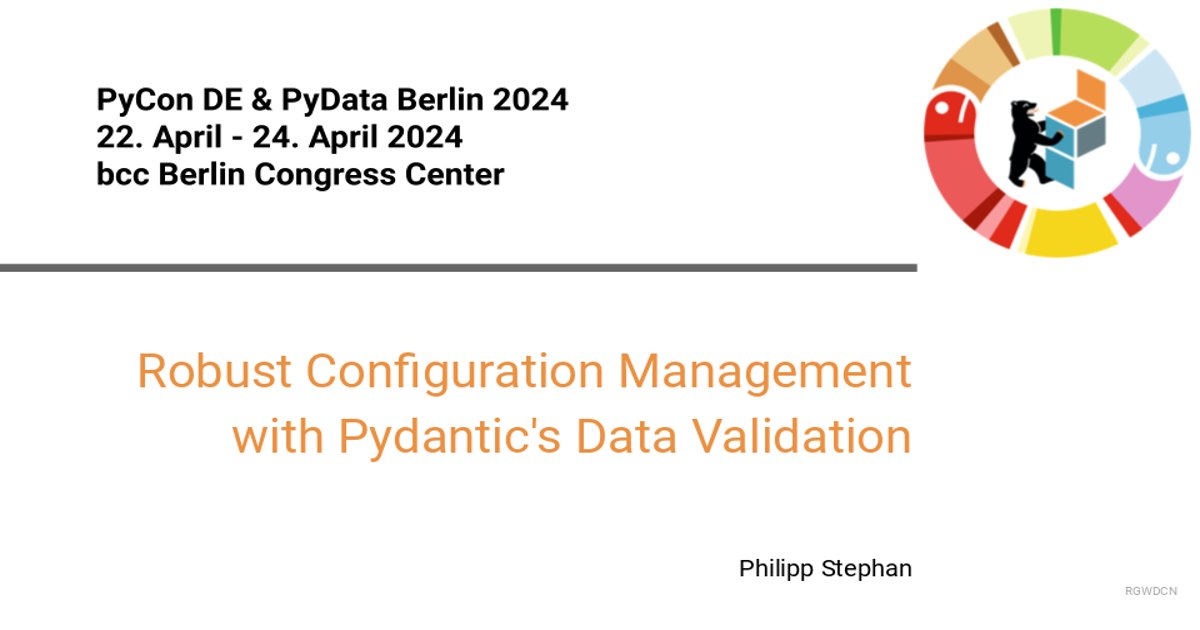Robust Configuration Management with Pydantic's Data Validation
Philipp Stephan
As applications grow, so do the amount of configurable features. Managing consistent defaults, maintaining user and developer documentation, and ensuring uniform parsing among a growing number of client applications can become a challenge. Adding constraints like complex fallback hierarchies and backwards compatibility, increases the probability of runtime errors. We show how Pydantic's strong data validation and integration into Python's type annotations can help building a strict specification for your configuration format, catch misconfiguration early, and mitigate the aforementioned problems with a non-formalized configuration management system.
Philipp Stephan

